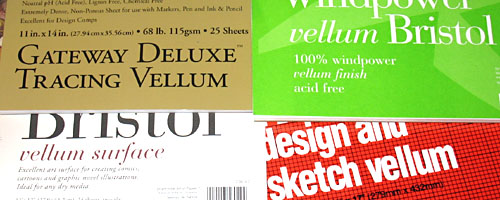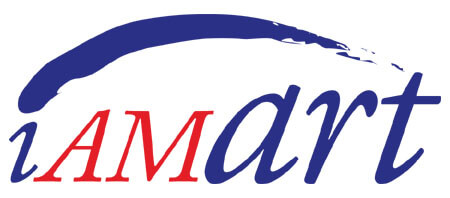what is vellum?
a common term with different meanings

Although most people have a specific idea of what they are looking for when they ask for “vellum,” the term, “vellum”, is actually used describe a variety of different types of paper. Some vellum papers are heavy, while others are thin and transparent. What these papers have in common is the smooth, even quality of their surface.
Historically, vellum wasn’t paper at all, but a kind of parchment made from treated animal hide. This kind of vellum is hard to find today, although bookbinders still use it sometimes for high-end productions. Because it was expensive and difficult to make, this animal-based vellum was, in its time, the most valued kind of writing surface available. It was durable and so smooth that lengthy compositions could be written or drawn out with no risk ink spots or tears.
Vellum today (paper vellum) is not made out of animal hides. It is generally made of cotton, wood pulp, synthetic materials or some combination of those items. Paper vellum usually refers to two distinct kinds of paper: translucent, or “drafting” vellum, and bristol vellum:
Drafting vellum, sometimes called design vellum, is semi-transparent, or translucent, which makes it a fantastic option for tracing or technical drawing.
Bristol vellum, also referred to as vellum-surface bristol, is thick and is often used with heavier media, as well as in printing. Although vellum-surface bristol is quite smooth, its surface is distinguished by a somewhat velvety feel, which has a little more texture than bristols that are marked “smooth” or “plate”.
Both drafting vellum and bristol vellum work well for fine lines made with pencil or ink, and hold up well to repeated erasing.
Another type of material commonly referred to as vellum is translucent plastic or paper in thin sheets that can be clear, white, or colored. Other than being thin enough to allow light through, there is no specific weight, texture or set of qualities that specifically defines this type of material as vellum.
